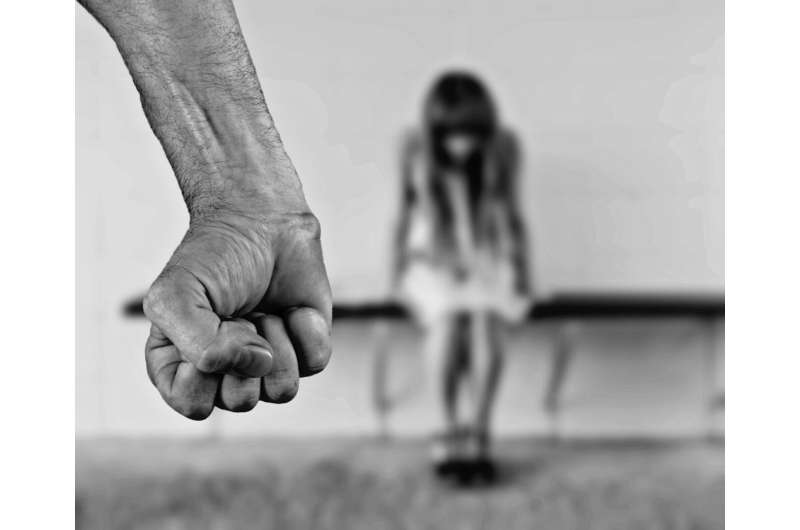Harassment and abuse perceived to harm poor women less: New research finds a 'thicker skin' bias

People think sexual harassment and domestic abuse are less harmful for women in poverty than for higher-income women, according to involving 3,052 Americans conducted by and . We also found that people believe women in poverty require less help and support when experiencing these kinds of sexual misconduct.
My research partners and I recruited participants of different ages, genders and incomes. We asked them to read about either a low-income woman or a high-income woman who was dealing with workplace sexual harassment or intimate partner abuse. Then we had participants rate how distressing these instances would be for the woman.
The harassment events described inappropriate behavior from a co-worker, such as sexual comments and unwanted advances, while domestic abuse events included threats, demeaning comments and physical violence from the woman's partner. In some of the studies, participants also rated how much social support or bystander intervention would be necessary for these events.
Our participants rated the harassment and abuse events as less upsetting for the lower-income woman than for the higher-income woman. They also thought the lower-income woman would need less emotional support from friends and family and less help from bystanders than the higher-income woman. On average, participants thought she needed only as her higher-income counterpart.
The result was the same whether the woman was white, Black, East Asian or Latina. Both low- and high-income study participants shared this pattern of judgment—as did male and female participants.
Why it matters
There is no data that shows lower-income women are less affected by gender-based violence—in fact, there is evidence they are often .
Women in poverty are and —a²Ô»å after experiencing sexual misconduct. Our research suggests that stereotypes about toughness may contribute to the neglect low-income women encounter when they seek help after violence.
It isn't that study participants didn't like the low-income woman. In fact, in our studies, participants rated the low-income woman as friendlier and warmer than the higher-income woman. But liking the low-income woman didn't prevent participants from thinking the harassment and abuse would be less harmful for her.
Such perceptions may have wide-ranging consequences. For example, low-income women may not receive the care they need from those around them. They also may be disproportionately neglected by those in powerful positions, such as human resources managers and police investigating domestic abuse.
Biased perceptions may help explain why lower-income women .
Already, the neglect of low-income women has been effectively part of U.S. federal workplace law based on . For example, in the 1995 case , the court ruled that sexually harassing behaviors in a "white collar" workplace do not necessarily qualify as harassment in "blue collar" contexts like construction sites.
This logic echoes our study participants' judgments—a²Ô»å also partially explains why low-income women have spoken out about being .
What other research is being done
Our research fits with a examining beliefs around experiencing adversity. People seem to widely "what doesn't kill you makes you stronger." Individuals who have experienced past hardship, such as women experiencing financial difficulties, are perceived by others to have grown a "," making them less affected by new negative events.
Our findings show this kind of bias exists for low-income women—a²Ô»å highlight the need for strategies to counteract this biased belief.
Provided by The Conversation
This article is republished from under a Creative Commons license. Read the .![]()


















